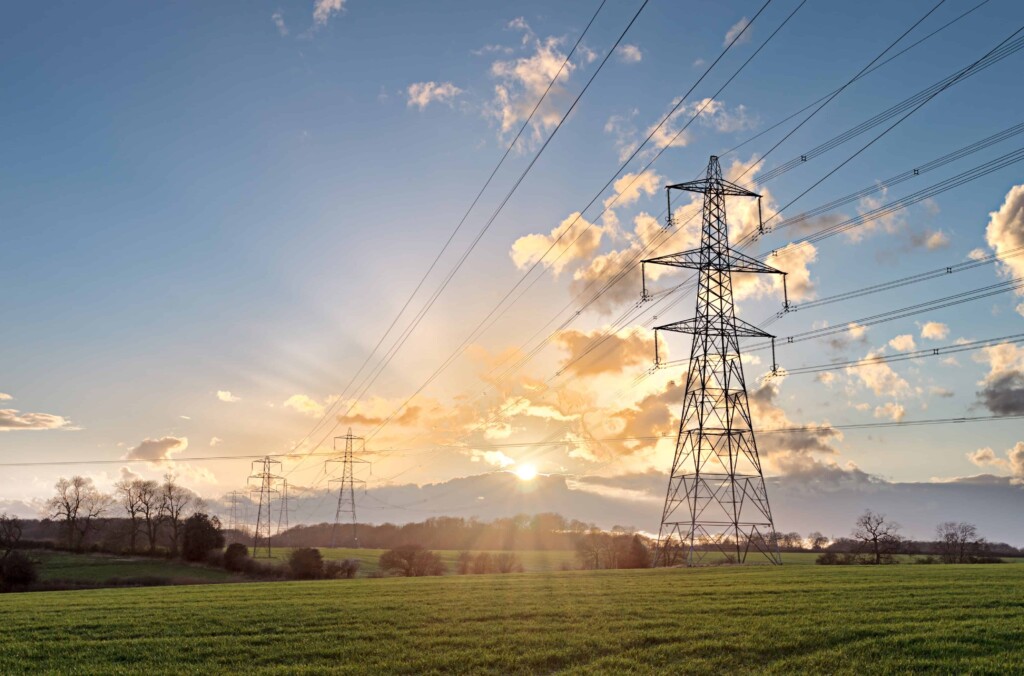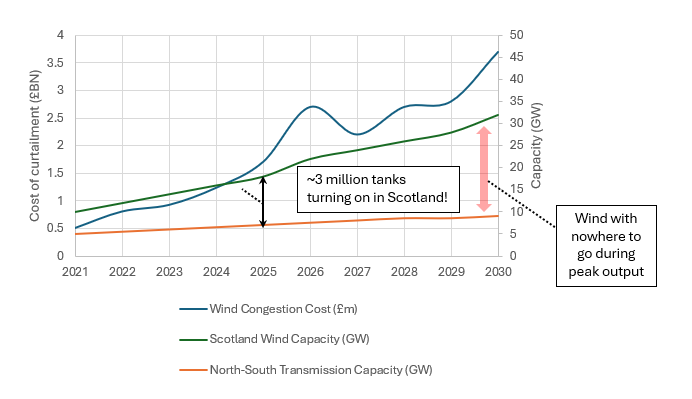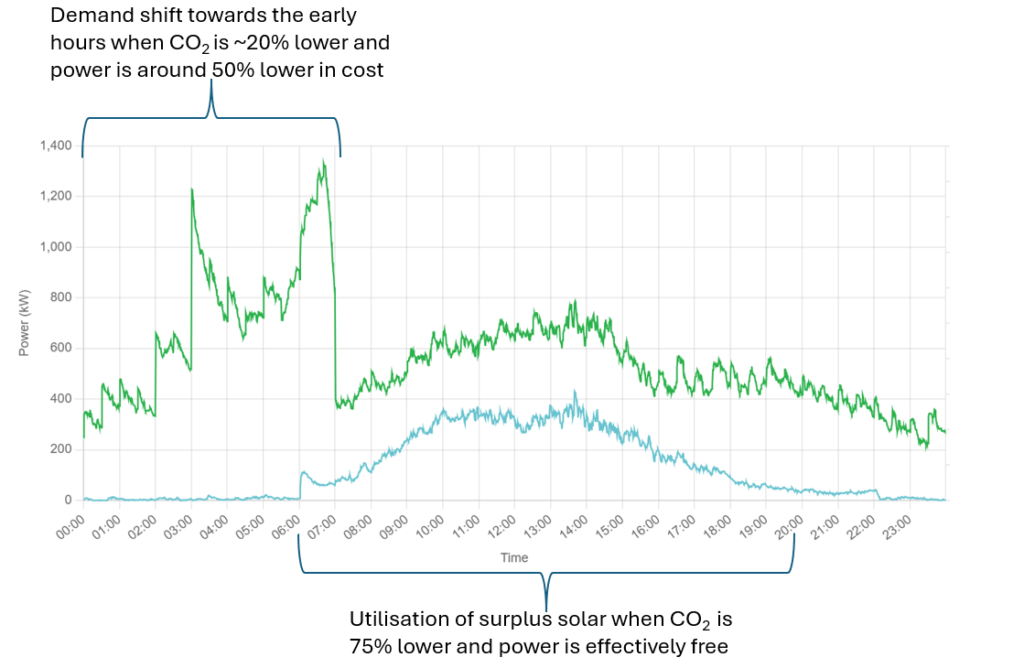
The Controversy of Curtailment: Delivering a Smart Secure Electricity System with Smart Cylinders
In this blog, Pete Armstrong, CEO & Co-founder of Mixergy, explores how Smart Cylinders can help tackle curtailment, rising energy costs, and grid security—challenges that have become even more pressing in light of the UK government’s recent Smart Secure Electricity Systems (SSES) programme, which sets new requirements for home appliances to better support the grid.
At Mixergy we have been working for over ten years on the development of a range of smart, connected hot water storage solutions to help our energy system accommodate more renewables whilst reducing bills for householders.
Our sector has come into sharp focus in recent months through a combination of three key factors: Skyrocketing electricity prices; the controversy surrounding billions being spent to curtail wind power; and growing concerns around the security and stability of our electricity system.
This article delves into these themes whilst examining how Smart Cylinders can provide a core part of the solution to these challenges at scale.
Wind ‘backed up’ behind the Scottish border
There is a major disconnect between the rate at which we’re investing in grid infrastructure against the deployment of renewables. Carbon Tracker captured this brilliantly back in 2023 when they pointed out the growing bottleneck between Scotland’s increasing wind resource against the grid capacity to the major demand centres across England:

Vast quantities of surplus wind are building up behind the Scottish border to the point where huge amounts of money is being spent throttling output. This was one billion pounds in 2024, a figure expected to triple by the end of the decade.
At this point (2025), when wind power is at full tilt in the north, there is a transmission capacity shortfall of around 10GW to the south. At least half of this shortfall could be absorbed if every home in Scotland had a Smart Cylinder, capable of turning on or off at the right time whilst maintaining a continuous supply of hot water and, in some instances, support for the space heating system. This is the fundamental challenge we have been working on at Mixergy for the last ten years.
Crippling energy costs now in the public conscience
When we first started out, the challenge around surplus renewable electricity wasn’t yet in the public consciousness. However, with skyrocketing electricity prices stinging households and crippling industry, we’re now at a tipping point exemplified by the recent spat between two titans of the UK electricity sector.
Greg Jackson (CEO of Octopus Energy) and Dale Vince (CEO of Ecotricity) have been trading blows around the idea of splitting the market up regionally across the UK; an idea referred to as ‘Zonal Electricity Pricing’. Greg and Dale are entrenched firmly in the ‘pro’ and ‘against’ camps respectively. On the one hand, Zonal Pricing promises plummeting electricity costs where surplus generation arises, leading to lower bills and a mobilisation of manufacturing to northern Scotland; a potential win for the levelling up agenda. On the other hand, Dale points out the challenges from an equity standpoint where a postcode lottery on electricity costs would prevail. Other industry figures point to the market uncertainty where a sudden change in market conditions might stifle investment in further renewable deployment.

At this stage, zonal electricity pricing is being mooted through consultations under consideration by Ed Miliband; though he is already on the record as stating that he won’t preside over a policy that leads to a ‘post code lottery’ for bill payers.
So given the uncertainty around Zonal Pricing, what are the incentives today for a household to install a smart hot water tank?
What role do Smart Cylinders play today?
In spite of the regional challenges of moving power around, the UK has developed an advanced market which rewards consumers who can shift demand throughout the day by taking advantage of surplus generation at night alongside surplus solar production during the day. The following chart shows the demand profile associated with a fleet of 10,000 electric Mixergy Smart Cylinders operating in the UK:

Our fleet of Smart Cylinders are saving customers hundreds of pounds per year whilst yielding significant reductions in carbon emissions. We have learned over the years that there are many ways in which a Smart Cylinder can help both the energy system and the customer, for instance:
- By turning on at the best times against traditional time of use tariffs such as Economy 7 and Economy 10
- By providing continuous optimisation against more advanced, variable time of use tariffs such as Octopus Agile.
- Through the provision of grid inertia via frequency response to National Grid, where each tank monitors grid frequency and turns on when it goes high or off when it goes low.
- By helping with local network constraints by absorbing surplus roof-top solar energy (which might otherwise be curtailed).
What are the opportunities for Smart Cylinders tomorrow?
Whilst customers are being rewarded passively today, as Mixergy cylinders optimise against their retail electricity tariff; there are seismic changes afoot within the UK’s electricity market which are about to take things to the next level. These changes have been largely buried amongst a number of arcane sounding grid codes, one notable example being ‘P415’.
P415 heralds a change which will allow providers of flexibility services to transact directly with householders, independent of the relationship between the homeowner and their electricity supplier. This means you could have EDF as your electricity supplier, but your electric car charger could pay you for using excess wind through another party.
This has been both hotly anticipated and hugely controversial within the UK, as P415 brings the opportunity for small aggregators to challenge the dominance of large retail electricity providers. There are many open questions around how the dynamics of this market might play out; but one thing is clear to us at Mixergy, it is likely to create opportunities to unlock more value than every before from a Smart Cylinder.
A P415 enabled world is going to allow a Smart Cylinder operating in Lincoln to get paid up to £100 a year to use surplus solar from Cornwall or wind from Scotland. For us, this is a great step forward because why pay wind farms to turn off when you can pay consumers to switch on?
Can Smart Cylinders provide a secure, scalable solution for the future?
But what happens in a world where increasingly powerful incentives drive households towards the installation of millions of Smart Cylinders? At what stage does the scale of a Smart Cylinder fleet pose a critical risk to our energy system in terms of grid stability?
One way to estimate this is to look at the ‘Single Loss of Load’ (SLOL) contingency planning employed by National Grid to ensure that we have a resilient power system. This work involves sizing the reserve services that National Grid has at its disposal to respond to a sudden outage from something like the UK to France DC interconnector (~1GW) or Sizewell B’s nuclear reactor (~1.5GW). At this scale we are looking at anywhere between 500,000 to 1 million Smart Cylinders. Were a fleet of this size to go wrong (or a comparable fleet of electric car chargers), then the grid could destabilise, leading to blackouts.
Whilst recognising the growing opportunity around smart EV chargers and Smart cylinders through measures such as P415, the government has also been cognisant of the risks posed by large fleets of domestic assets going awry. There are three core areas of risk that we think about on a regular basis at Mixergy:
- A malicious cybersecurity breach
- A corrupted firmware update causing all systems to switch on or off at the same time
- A bug in the software running on the end device or centralised control platform leading to systems turning on or off en masse inadvertently
To prevent any one of these scenarios from unfolding, the government launched a consultation called the Smart and Secure Electricity System (or SSES). The objectives behind this work has been to formulate protocols, control strategies and rules around how Energy Smart Appliances (such as EV chargers and Smart cylinders) and their associated control infrastructure should work. The implementation of SSES will be key in providing a path forward for the whole energy sector to give all market participants the confidence to deploy flexible demand response assets at scale.
However our electricity system develops, the reality is that hot water storage is going to have to increase at scale as homes decarbonise. This is because there is simply not enough power capacity in our electricity network to deliver the heating and hot water requirements without thermal storage. Every heat-pump installation requires a hot water tank and, even if it’s possible to get the build fabric performance to a level where direct electric heating is cost effective, an electric hot water cylinder of some form is still a must for doing the dishes, washing and bathing etc.
The move away from combis back to hot water cylinders presents a huge opportunity to absorb surplus power production behind grid constraints, optimise against variable time of use tariffs whilst providing valuable grid inertia to help us accommodate more renewable energy sources. Consequently, this is an exciting time for us at Mixergy alongside our wider sector given the three emerging tailwinds behind us:
- Greater public awareness of renewable curtailment costs
- The advent of market regulations such as P415 which will pay customers to turn on instead of wind farms to turn off
- The work to carve out a clear path ahead on resilience, scalability and cybersecurity through the SSES consultation
We look forward to a world where these threads come together to drive the mass adoption of smart cylinders because why pay wind farms to turn off when we can pay households to turn on!
Pete Armstrong, Mixergy CEO and Co-Founder

